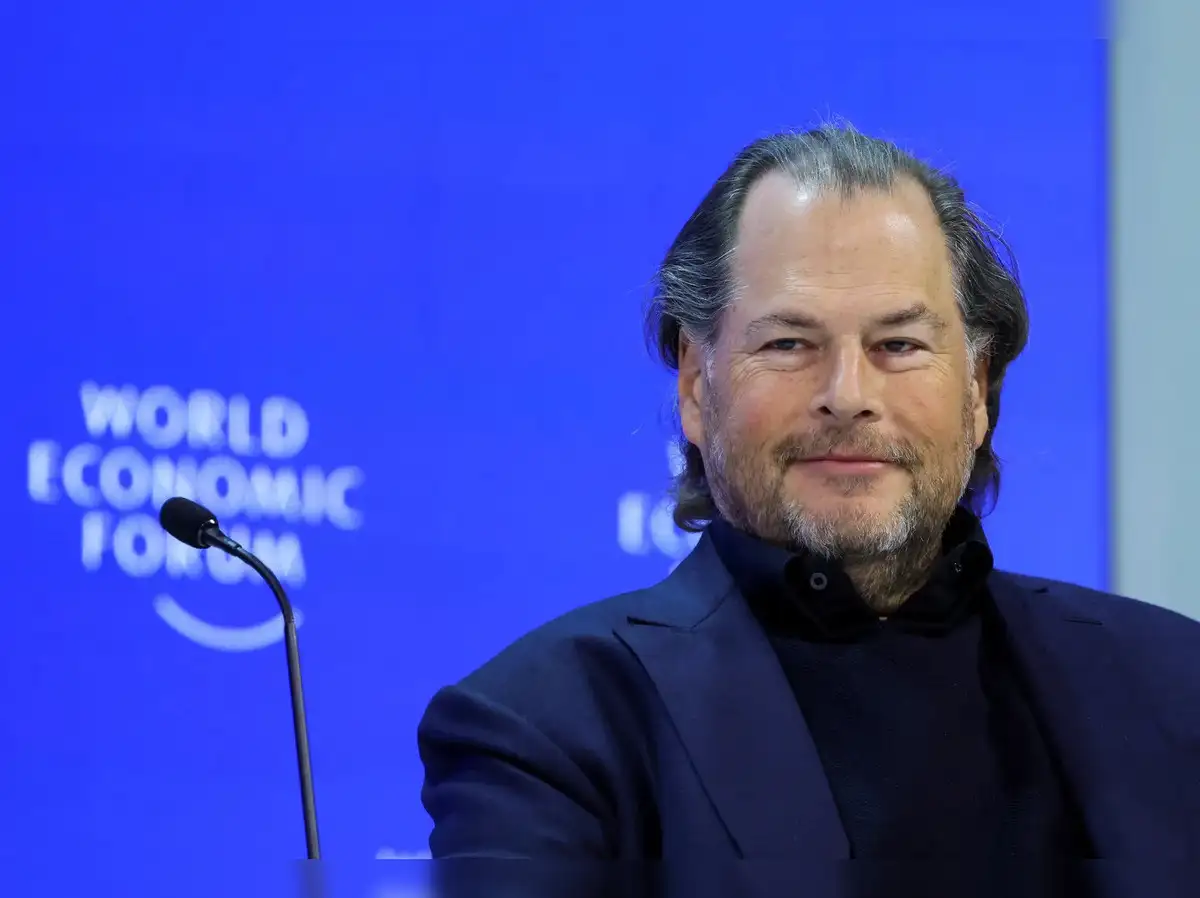Muskets, markets and models: Why AI is the new engine of revolution - The Economic Times
It was crude—woven reeds and branches—but it enclosed something: wheat, barley, and goats. It marked, perhaps for the first time, something that was “owned”, and not “shared”.
The agricultural revolution had begun. Until then, homo sapiens moved with the seasons, living in bands. Agriculture brought stability, and with it, abundance. But it also brought division—those who owned land, and those who worked it.
The fence didn’t just mark a field. It marked the beginning of power.
If the Agricultural Revolution marked the beginning of ownership, the next great revolutions were about who gets to decide, who gets to rule, and who gets to benefit from growth—enter the Dutch, British and French revolutions.
The Dutch Revolution (1568 to 1648) emerged from a prosperous, mercantile society’s growing desire for religious freedom and self-rule. The Netherlands had fuelled the Spanish Empire for decades—wealthy, literate, and commercially sophisticated. But when the Spanish crown sought to tighten control through religious conformity and heavy taxation, resistance grew. What began as political unrest escalated into a brutal, drawn-out conflict—the Eighty Years’ War—marked by city-wide sieges, economic collapse, famine, and devastation. Yet amid this chaos, something transformative took root. With the signing of the Treaty of Westphalia, the Dutch finally secured independence. In its aftermath, the world witnessed the birth of the first modern republic, the first stock exchange, and a striking new paradigm: that commerce—not aristocracy—could shape the destiny of a nation.
The Industrial Revolution (c1760 to 1840) was ignited by a potent convergence of coal, capital, and invention that fundamentally redefined how humans worked and produced. It took root in Britain’s damp textile towns and soot-stained mills, where steam engines, spinning jennies, and ironworks accelerated productivity and reshaped entire industries. Cities swelled with labour, but beneath the promise of progress lay deep human cost. Workers endured punishing fourteen-hour shifts; children were forced into hazardous labour under humming looms. As mechanization displaced skilled artisans, the Luddites rose in fury, smashing the very machines that threatened their way of life. Overcrowded slums bred illness and unrest, and economic stratification hardened into structural class conflict. While the revolution ushered in modern economies and birthed the middle class, it also introduced systemic inequality and sparked radical ideologies like Marxism. Power shifted to those who could master machines, and though the age brought progress, it did not bring peace.
The French Revolution, which erupted in 1789, was the culmination of centuries of royal extravagance, mounting economic crisis, and the simmering force of Enlightenment ideals. The monarchy, deeply in debt and indifferent to public hardship, presided over a population that could scarcely afford bread. As grain prices soared and inequality became unbearable, the masses rose in revolt. What began with outrage in pamphlets soon spilled violently into the streets. Paris bled as the Bastille fell, the monarchy crumbled, and the guillotine cast its long shadow over king and citizen alike. Robespierre’s Reign of Terror followed, only to be succeeded by the rise of Napoleon, who crowned himself emperor in a republic still searching for stability. Though the revolution ended absolute monarchy and seeded democratic ideals across Europe, it also proved that noble intentions do not shield societies from chaos, especially when power lies unclaimed.
These revolutions may have differed in cause and character, but they followed a remarkably consistent arc. Each began with a group poised to gain rising against those with something to lose. Violence was not incidental but instrumental—a mechanism of transition rather than chaos. Old institutions—empires, monarchies, artisan guilds—collapsed, and in their place emerged new systems of governance, production, and power. They were not always clean or successful, but they reshaped how societies functioned, how economies operated, and how individuals understood their roles.
Though past revolutions were chaotic and violent, they were visible—marked by slogans, battles, and treaties. Today’s revolution is quieter, but no less transformative.
It runs on servers and learns with every click. Not led by muskets, but by models, this revolution may change what it means to be human. Intelligence, once purely biological, now evolves in machines. As Max Bennett notes in A Brief History of Intelligence, traits like memory, imagination, and reasoning took nature millions of years to develop. AI has been gaining them for decades. We’re no longer programming tools—we’re training minds.
AI threatens to upend every existing hierarchy, not just by replacing roles, but by redrawing the very structure of power. A new class division is emerging—between those who own the algorithms and those who are shaped by them. Platforms become landlords of digital capital; users, the new labour. Influence over elections, markets, and warfare will lie with those who command data and compute. As land defined power in the agrarian age, and capital in the industrial one, intelligence—artificially concentrated—is becoming the new fault line between the empowered and the expendable.
Conflict is inevitable. Jobs will vanish. Nations will clash over technological dominance. Truth itself will blur under deepfakes and disinformation. Education no longer assures an edge. Labour loses primacy. Identity is malleable. Markets react not just to fundamentals, but to synthetic narratives. Most critically, AI is recursive. It learns how to improve itself. It accelerates acceleration.
Just as the fence marked the beginning of power, the neural net may mark the end of humanity’s monopoly over it. We are no longer the sole authors of change. But revolutions don’t just rewrite code or law—they reprice belief. And nowhere is belief more foundational than in financial markets.
For over half a century, the U.S. dollar has been more than a currency—it has been a consensus. Not backed by gold, but by trust: in American institutions, its central bank, and its role as the global stabiliser. The world bought dollars not for yield, but for safety.
That belief sustained a remarkable imbalance—the dollar’s dominance in global finance far outstripping America’s share of global output. But belief is brittle. Political brinkmanship, debt ceiling theatrics, and the return of inflation have chipped away at that trust. And as confidence falters, so too does the foundation beneath every dollar-denominated asset—from oil and equities to the scaffolding of global financial stability.
In such a world, the old rules of investing—buy good companies, hold for the long term—begin to break. Fundamentals no longer move markets on their own. Instead, flows, liquidity cycles, and sentiment dominate. Valuation models struggle to keep pace with regime shifts. Macro narratives overpower micro truths. Greed and fear displace patience and discipline.
Cycles—across stocks, sectors, and market caps—are taking over. And they're getting shorter. What once unfolded over years now collapses into months, driven by the speed and scale of modern capital. The rise of retail participation—turbocharged by social media, zero-cost trading, and an always-on information stream—has added momentum to this churn.
In this fractured environment, investing has become less about conviction and more about context. Less about holding through cycles, and more about surviving their whiplash. The half-life of belief is collapsing, and with it, the foundations of traditional investing. We used to price value. Today, we price belief—and belief, increasingly, is built on noise.
History does not move in straight lines—it turns on ruptures. From the first fence to the first factory to the first algorithm that wrote a sentence, every revolution has redrawn the contours of power, belief, and conflict. What began with land shifted to machines, then to ideas, and now to intelligence itself. As markets mirror this upheaval—not just reacting to capital, but to chaos—the task for asset allocators is no longer about riding a single trend or trusting a single heuristic. It is about staying anchored in a world of shifting tides. Navigating revolutions, yes—but more urgently, navigating cycles. Because in an age where conviction is fleeting and regimes turn fast, it is the ability to adapt to cycles—across styles, sectors, and sentiment — that will define the path to consistent, risk-adjusted returns.
Read More News on
(What's moving Sensex and Nifty Track latest market news, stock tips, Budget 2025, Share Market on Budget 2025 and expert advice, on ETMarkets. Also, ETMarkets.com is now on Telegram. For fastest news alerts on financial markets, investment strategies and stocks alerts, subscribe to our Telegram feeds .)
Subscribe to ET Prime and read the Economic Times ePaper Online.and Sensex Today.
Top Trending Stocks: SBI Share Price, Axis Bank Share Price, HDFC Bank Share Price, Infosys Share Price, Wipro Share Price, NTPC Share Price
Read More News on
(What's moving Sensex and Nifty Track latest market news, stock tips, Budget 2025, Share Market on Budget 2025 and expert advice, on ETMarkets. Also, ETMarkets.com is now on Telegram. For fastest news alerts on financial markets, investment strategies and stocks alerts, subscribe to our Telegram feeds .)
Subscribe to ET Prime and read the Economic Times ePaper Online.and Sensex Today.
Top Trending Stocks: SBI Share Price, Axis Bank Share Price, HDFC Bank Share Price, Infosys Share Price, Wipro Share Price, NTPC Share Price
Stories you might be interested in













